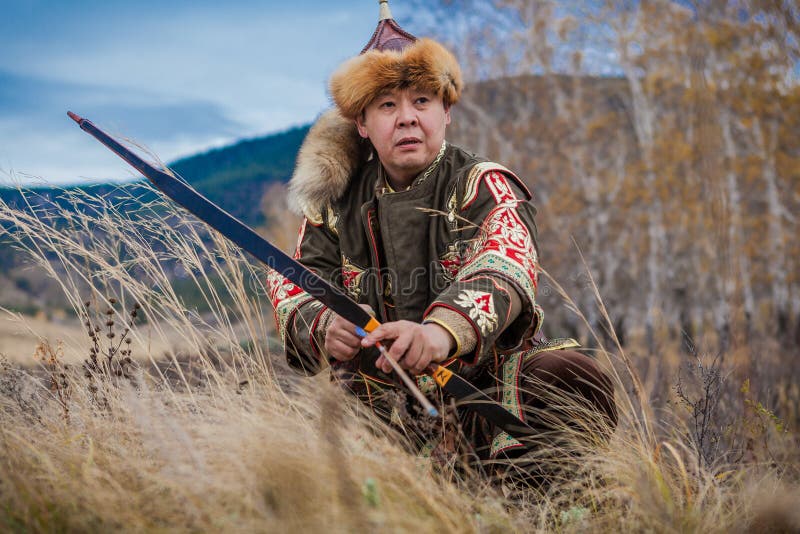Hunter Asia has become a fascinating topic for wildlife enthusiasts, conservationists, and adventure seekers alike. From the dense jungles of Southeast Asia to the vast landscapes of the Himalayas, the story of hunters in this region is rich with history, culture, and controversy. In this comprehensive guide, we'll delve deep into the world of Hunter Asia, exploring its origins, key players, and the impact it has on the environment.
Hunting in Asia is not just a sport; it is deeply intertwined with the cultural and historical fabric of the region. For centuries, hunters in Asia have played a significant role in shaping the ecosystem, traditions, and even economies of various countries. This article aims to provide an in-depth look into the phenomenon of Hunter Asia, covering everything from its historical roots to modern-day implications.
Whether you're a wildlife enthusiast, a history buff, or simply curious about the world of hunting in Asia, this guide will equip you with valuable insights and knowledge. Let's embark on this journey to understand the complexities and nuances of Hunter Asia.
Read also:Ray Charles Wife Bea The Untold Story Of Love Life And Legacy
Table of Contents
- History of Hunter Asia
- Biography of Notable Hunters in Asia
- Hunter Asia and Conservation Efforts
- Equipment Used by Hunters in Asia
- Legal Framework for Hunting in Asia
- Cultural Significance of Hunter Asia
- Environmental Impact of Hunter Asia
- Hunter Asia and Tourism
- Statistics on Hunter Asia
- The Future of Hunter Asia
History of Hunter Asia
Hunting in Asia dates back thousands of years, with evidence of early human settlements engaging in hunting activities for survival. The practice evolved over time, becoming not only a means of sustenance but also a symbol of power, prestige, and cultural identity.
From the royal hunts of ancient empires to the traditional hunting practices of indigenous communities, the history of Hunter Asia is diverse and multifaceted. In this section, we will explore the historical milestones that have shaped the hunting culture in Asia.
Origins of Hunting in Asia
The origins of hunting in Asia can be traced back to prehistoric times when early humans relied on hunting and gathering for their daily needs. As civilizations developed, hunting became more organized and structured, often involving elaborate rituals and ceremonies.
- Prehistoric hunting tools such as spears and bows were used by early Asian hunters.
- Royal hunts in ancient China, India, and Persia were grand events attended by kings and nobles.
- Indigenous communities in Southeast Asia developed unique hunting techniques adapted to their environments.
Biography of Notable Hunters in Asia
Throughout history, Asia has been home to several notable hunters whose exploits have left a lasting impact on the region's hunting culture. Below is a brief biography of some of these legendary figures:
Biographical Information
| Name | Country | Years Active | Notable Achievements |
|---|---|---|---|
| Jim Corbett | India | 1900s | Known for hunting man-eating tigers and leopards in India. |
| Frederick Selous | East Africa (but influential in Asia) | 1800s-1900s | One of the most famous hunters and conservationists of his time. |
| Tenzin Gyatso | Tibet | 1950s | Documented traditional hunting practices in the Himalayas. |
Hunter Asia and Conservation Efforts
The relationship between Hunter Asia and conservation efforts is complex and often controversial. While hunting has historically contributed to the decline of certain species, it has also played a role in conservation initiatives through regulated hunting practices.
This section will explore how Hunter Asia has influenced conservation efforts and the measures being taken to ensure sustainable hunting practices.
Read also:Who Has Justin Bieber Dated A Comprehensive Exploration Of His Love Life
Conservation Through Regulated Hunting
Regulated hunting programs have been implemented in several Asian countries to manage wildlife populations and generate revenue for conservation projects. These programs aim to strike a balance between preserving ecosystems and allowing controlled hunting activities.
- Regulated hunting in Nepal has helped protect endangered species like the one-horned rhinoceros.
- In Bhutan, traditional hunting practices are closely monitored to ensure minimal environmental impact.
Equipment Used by Hunters in Asia
The equipment used by hunters in Asia varies depending on the region and the type of game being hunted. From traditional weapons to modern firearms, the tools of the trade have evolved significantly over time.
In this section, we will examine the various types of equipment used by hunters in Asia and their impact on hunting practices.
Traditional vs. Modern Hunting Equipment
Traditional hunting equipment in Asia includes bows, arrows, spears, and traps, while modern hunters rely on firearms, scopes, and advanced tracking technologies.
- Traditional hunting methods are still practiced by indigenous communities in Southeast Asia.
- Modern hunting equipment has increased the efficiency and precision of hunting activities.
Legal Framework for Hunting in Asia
The legal framework for hunting in Asia varies significantly across countries, reflecting different cultural, economic, and environmental priorities. This section will provide an overview of the laws and regulations governing hunting activities in various Asian nations.
Key Laws and Regulations
- In India, the Wildlife Protection Act of 1972 regulates hunting activities and protects endangered species.
- China has implemented strict regulations on hunting to combat illegal poaching and wildlife trafficking.
- Malaysia allows controlled hunting of certain species under specific conditions.
Cultural Significance of Hunter Asia
Hunting in Asia is deeply embedded in the cultural fabric of many communities, serving as a rite of passage, a source of pride, and a means of preserving traditions. This section will explore the cultural significance of Hunter Asia and its role in shaping identities and communities.
Hunting as a Cultural Practice
From the tribal rituals of the Borneo rainforests to the royal hunts of ancient empires, hunting has played a vital role in shaping the cultural landscape of Asia.
- Hunting festivals in Nepal celebrate the harmony between humans and nature.
- In Mongolia, traditional hunting with golden eagles is a cherished cultural practice.
Environmental Impact of Hunter Asia
The environmental impact of Hunter Asia is a topic of ongoing debate. While hunting can contribute to the conservation of certain species, it can also lead to habitat destruction and the decline of others.
This section will analyze the environmental consequences of hunting activities in Asia and discuss measures to mitigate their negative effects.
Impact on Biodiversity
Hunting activities in Asia have both positive and negative impacts on biodiversity. On one hand, regulated hunting can help control populations of certain species, while on the other hand, overhunting can lead to the extinction of others.
- Overhunting has contributed to the decline of species like the tiger and rhinoceros in Asia.
- Conservation programs aim to restore habitats and protect endangered species from hunting pressures.
Hunter Asia and Tourism
Hunting tourism has emerged as a significant industry in several Asian countries, attracting adventure seekers and wildlife enthusiasts from around the world. This section will explore the role of hunting tourism in the region and its economic implications.
Economic Benefits of Hunting Tourism
Hunting tourism generates substantial revenue for local economies, providing jobs and supporting conservation efforts. However, it also raises ethical and environmental concerns that need to be addressed.
- Hunting safaris in India and Nepal attract tourists interested in wildlife experiences.
- Revenue from hunting tourism is often reinvested in conservation and community development projects.
Statistics on Hunter Asia
Data and statistics provide valuable insights into the scope and impact of Hunter Asia. Below are some key statistics related to hunting activities in the region:
Key Statistics
- According to the International Union for Conservation of Nature (IUCN), illegal hunting contributes to the decline of 70% of endangered species in Asia.
- Hunting tourism generates approximately $200 million annually in India alone.
- Regulated hunting programs have helped increase the population of certain species, such as the Indian gaur and sambar deer.
The Future of Hunter Asia
The future of Hunter Asia lies in finding a balance between preserving cultural traditions, protecting wildlife, and promoting sustainable practices. As global awareness of environmental issues grows, the role of hunting in Asia will continue to evolve.
This section will discuss the potential future directions for Hunter Asia and the challenges that lie ahead.
Challenges and Opportunities
As the world grapples with climate change and biodiversity loss, the future of Hunter Asia will depend on addressing key challenges such as illegal poaching, habitat destruction, and ethical concerns.
- Advances in technology and conservation science offer new opportunities for sustainable hunting practices.
- Collaboration between governments, communities, and conservation organizations is essential for the future of Hunter Asia.
Conclusion
In conclusion, Hunter Asia represents a complex and multifaceted phenomenon that encompasses history, culture, economics, and environmental concerns. From its ancient roots to modern-day practices, the world of Hunter Asia continues to evolve, presenting both challenges and opportunities.
We invite you to share your thoughts and experiences in the comments below. For more insightful articles on wildlife, conservation, and travel, explore our other content on the website. Together, we can contribute to a better understanding of the world around us and work towards a sustainable future for all.

